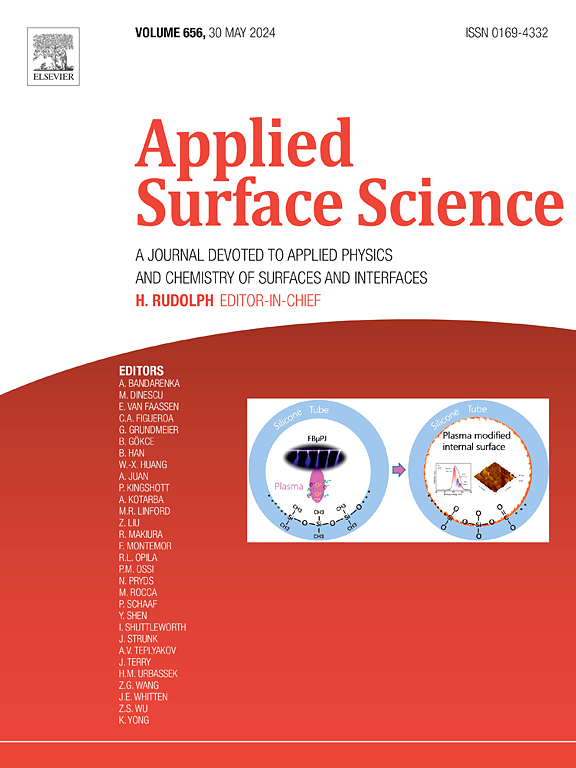单源MOCVD生长相纯β-NiS薄膜及增强底物相互作用电催化析氢
IF 6.3
2区 材料科学
Q2 CHEMISTRY, PHYSICAL
引用次数: 0
摘要
单硫化镍具有导电性好、化学稳定性好、成本效益高等优点,是一种很有前途的电化学能量转换和存储材料。然而,获得高质量、相纯和均匀的NiS薄膜仍然具有挑战性。本研究采用金属有机化学气相沉积(MOCVD)技术,以单源前驱体(N,N-二甲氨基-2-甲基丙烷-2-巯基)镍(II) (Ni(dmampS)2)为原料,在二氧化硅/硅衬底上合成了相纯β-NiS薄膜。Ni(dmampS)2独特的扭曲方平面结构有助于与衬底表面良好的相互作用,增强吸附并在相对较低的温度下实现均匀的薄膜生长。因此,我们获得了具有最小二次相或杂质的高度结晶的薄膜。电化学测试进一步证明了β-NiS膜在酸性条件下对析氢反应具有优异的催化活性和稳定性。本研究强调了单源前驱体MOCVD作为生产高质量β-NiS薄膜的可扩展方法的潜力。本文章由计算机程序翻译,如有差异,请以英文原文为准。


Growth of phase-pure β-NiS thin films via single-source MOCVD and enhanced substrate interaction for electrocatalytic hydrogen evolution
Nickel monosulfide (NiS) is a promising material in electrochemical energy conversion and storage owing to its high conductivity, chemical stability, and cost-effectiveness. However, achieving high-quality, phase-pure, and homogeneous NiS thin films remains challenging. In this study, we synthesized phase-pure β-NiS films on silicon dioxide/silicon substrates using the single-source precursor bis(N,N-dimethylamino-2-methylpropane-2-thiolato)nickel(II) (Ni(dmampS)2) via metal organic chemical vapor deposition (MOCVD). The unique distorted square-planar structure of Ni(dmampS)2 facilitates favorable interactions with the substrate surface, enhancing adsorption and enabling uniform film growth at relatively low temperatures. Consequently, we obtained highly crystalline films with minimal secondary phases or impurities. Electrochemical measurements further demonstrated that β-NiS films exhibit excellent catalytic activity and stability for the hydrogen evolution reaction under acidic conditions. This study highlights the potential of single-source precursor MOCVD as a scalable method for producing high-quality β-NiS thin films.
求助全文
通过发布文献求助,成功后即可免费获取论文全文。
去求助
来源期刊

Applied Surface Science
工程技术-材料科学:膜
CiteScore
12.50
自引率
7.50%
发文量
3393
审稿时长
67 days
期刊介绍:
Applied Surface Science covers topics contributing to a better understanding of surfaces, interfaces, nanostructures and their applications. The journal is concerned with scientific research on the atomic and molecular level of material properties determined with specific surface analytical techniques and/or computational methods, as well as the processing of such structures.
 求助内容:
求助内容: 应助结果提醒方式:
应助结果提醒方式:


